Submitted by WA Contents
Various elements of human behavior inform black-clad wooden pavilion designed by LIN Architects
China Architecture News - Dec 21, 2021 - 16:56 3013 views
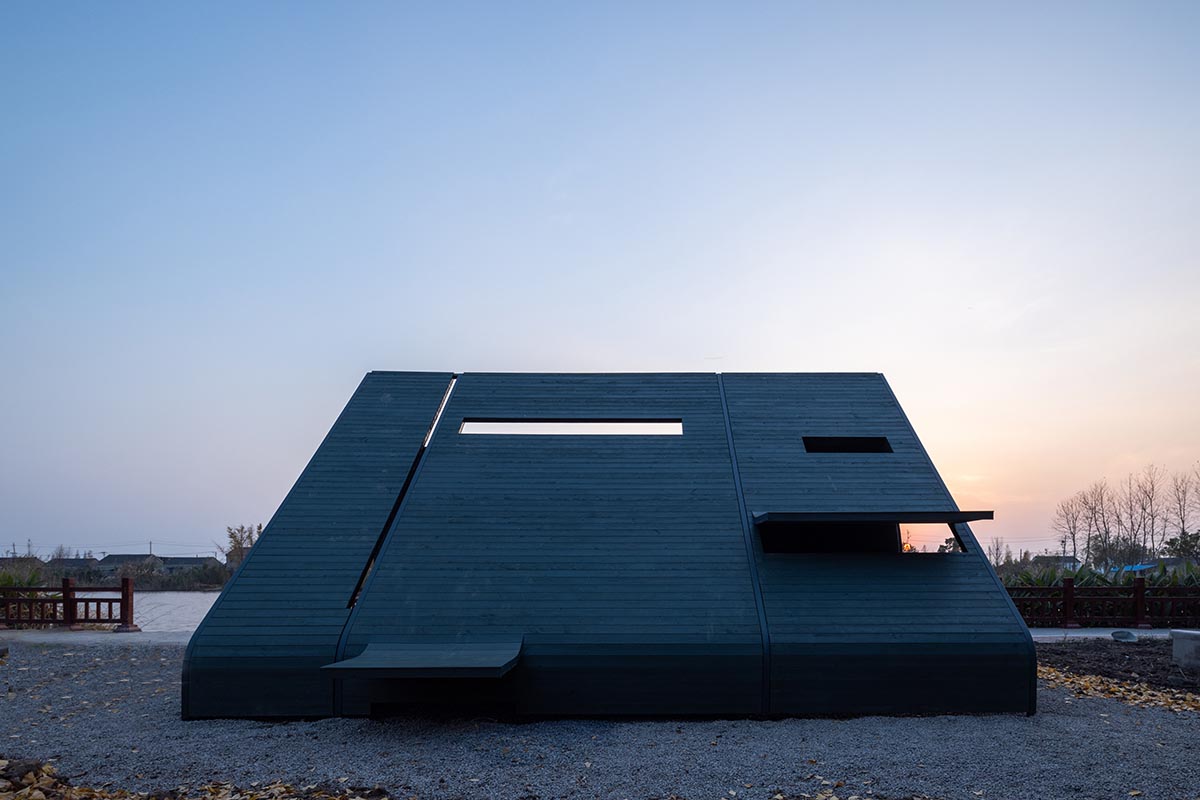
LIN Architects has built a folded, black-clad wooden pavilion that is informed by various elements of human behavior in Zhenjiang, China.
Named Wood Pavilion #1, the 50-square-metre pavilion is located near the river in the tourist area of Jiangxin Island in Zhenjiang, Jiangsu province, China.
The pavilion, searching for new architectural space prototypes, focuses on the different human behavioral patterns and ergonomics, creating an alternative space for a small-scale pavilion typology.

West facade. Image © LIU Songkai
In this project, architects give up the consideration of functional elements and start to look for keywords that can define spatial elements in the environment.
Comprised of a single linear volume, another linear volume wraps and hides the main volume inside. The studio designs the main living area within this linear volume, consisting of a seating space and a skylight for daylight.
After analyzing the site, the studio focused on three keywords: ergonomics, Proxemics, and Behaviorology. As the studio emphasizes, the scale of human behavior was one of the design parameters of this project.

North facade. Image © LIU Songkai
"Research on the behavior of different people is a very good design resource for architects. By observing and understanding the behavior of people, designers can discover all kinds of possibilities of space," said LIN Architects.
"Proxemics is a concept developed by Columbia University anthropologist, Edward T Hall, in his book, Hidden Scales," the studio added.
In this project, architects deepen and extend the concept, applying it to the category of physical space, discussing how intimate space, private space, social space, and public space are defined and designed at different scales.
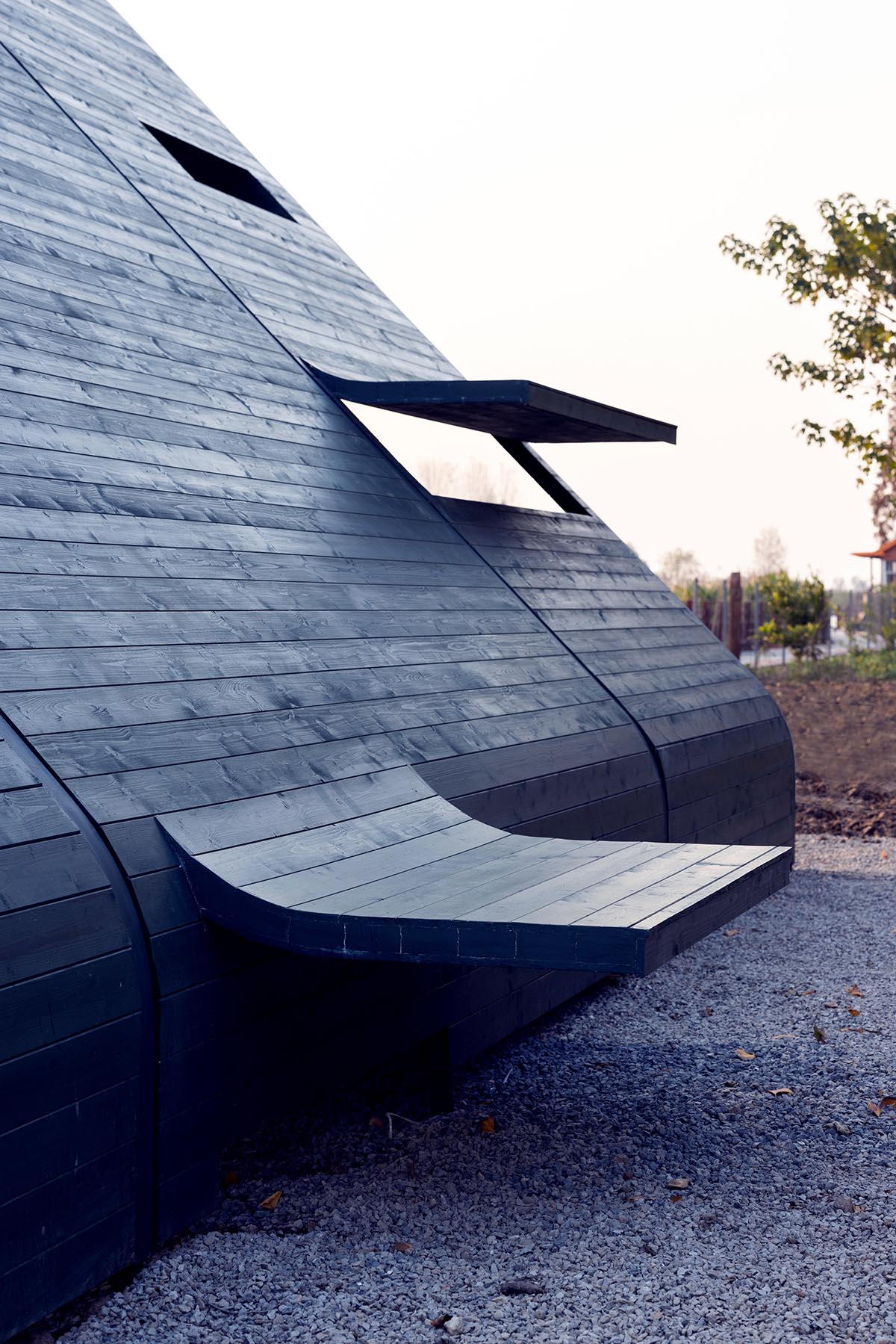
Visual window, light window, and small seat. Image © LIU Songkai
Speaking of behavior, from the perspective of architects Yoshiharu Tsukamoto and Momoyo Kaijima, human, nature, and architecture are discussed as a whole, because the study of this case does not involve the category of urban daily life pattern.
Therefore, the Behaviorology of various elements in the natural environment was studied and explored. Breeze, sunshine, the sound of waves, drizzle, sweet osmanthus fragrance, affecting feelings, perceptions, touch, hearing, visual elements, are the materials of the architects' design.
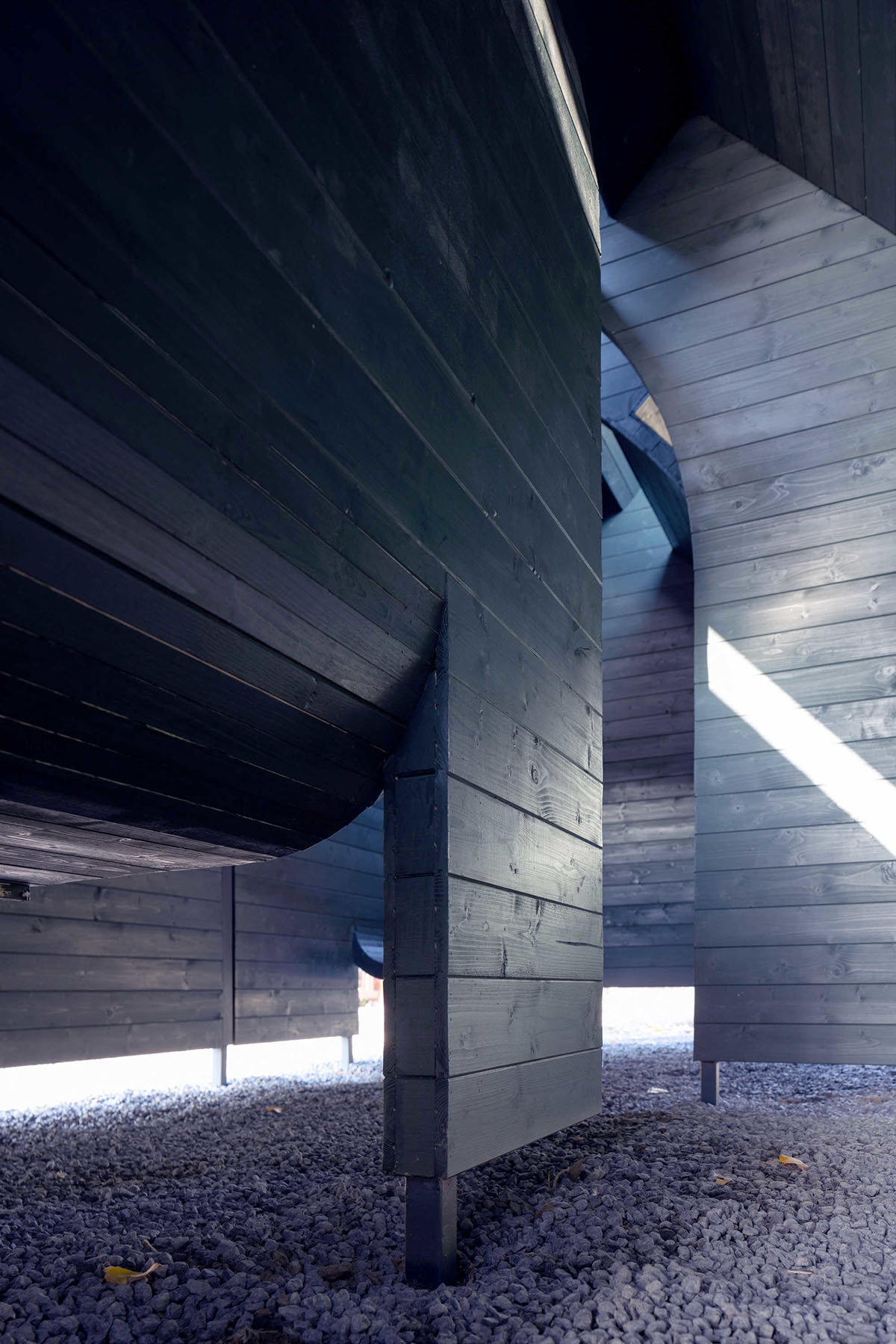
The wind blew the fallen leaves into space. Image © LIU Songkai
Through keyword research, architects began to create new forms of space in response to the various design elements surrounding it.
Human behavior, such as sitting, squatting, lying down, meditating, listening, peeping, wandering, overlooking, and even staring, is the form of space.
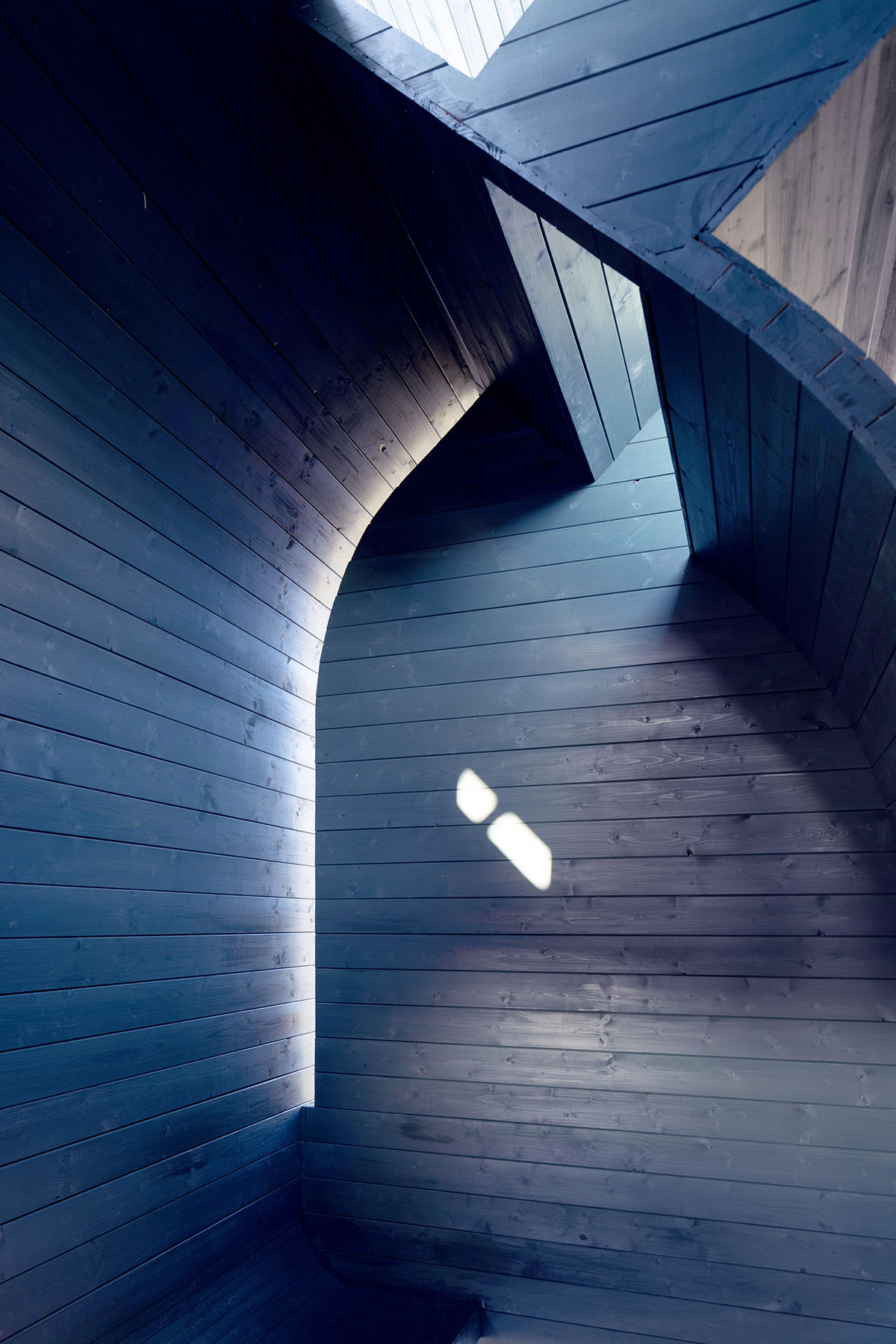
Relationship between light and shadow in interior Space. Image © LIU Songkai
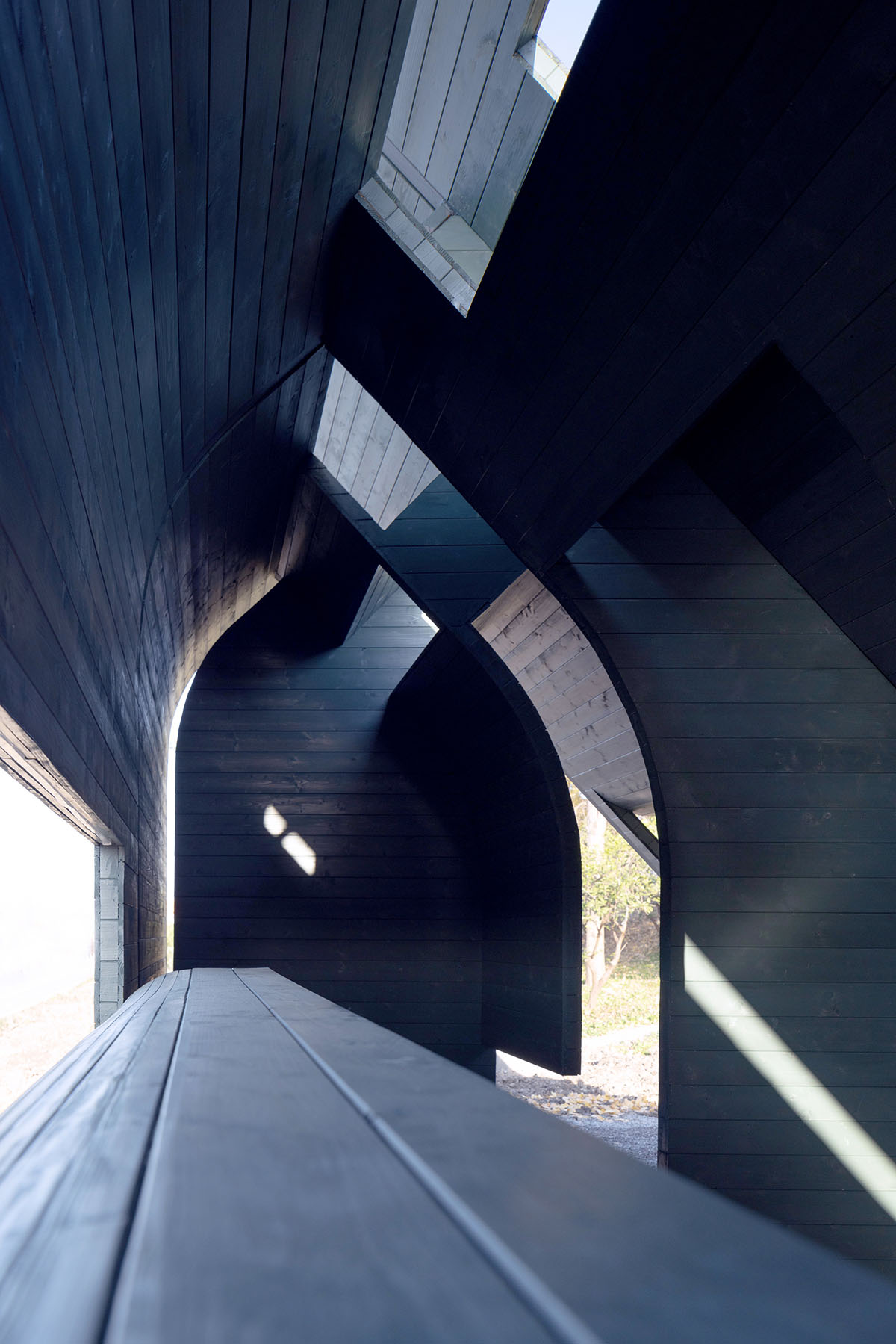
Relationship between light and shadow in interior Space. Image © LIU Songkai
The act of light, the rising of the sun, the setting of the sun, the passing of the last light, the coming of the lamp, the illumination, is a dialogue between space and time.
The surrounding environment, sea breeze brushing, leaves rustling, frogs chirping, cicadas singing, is the medium of dialogue between people and space.
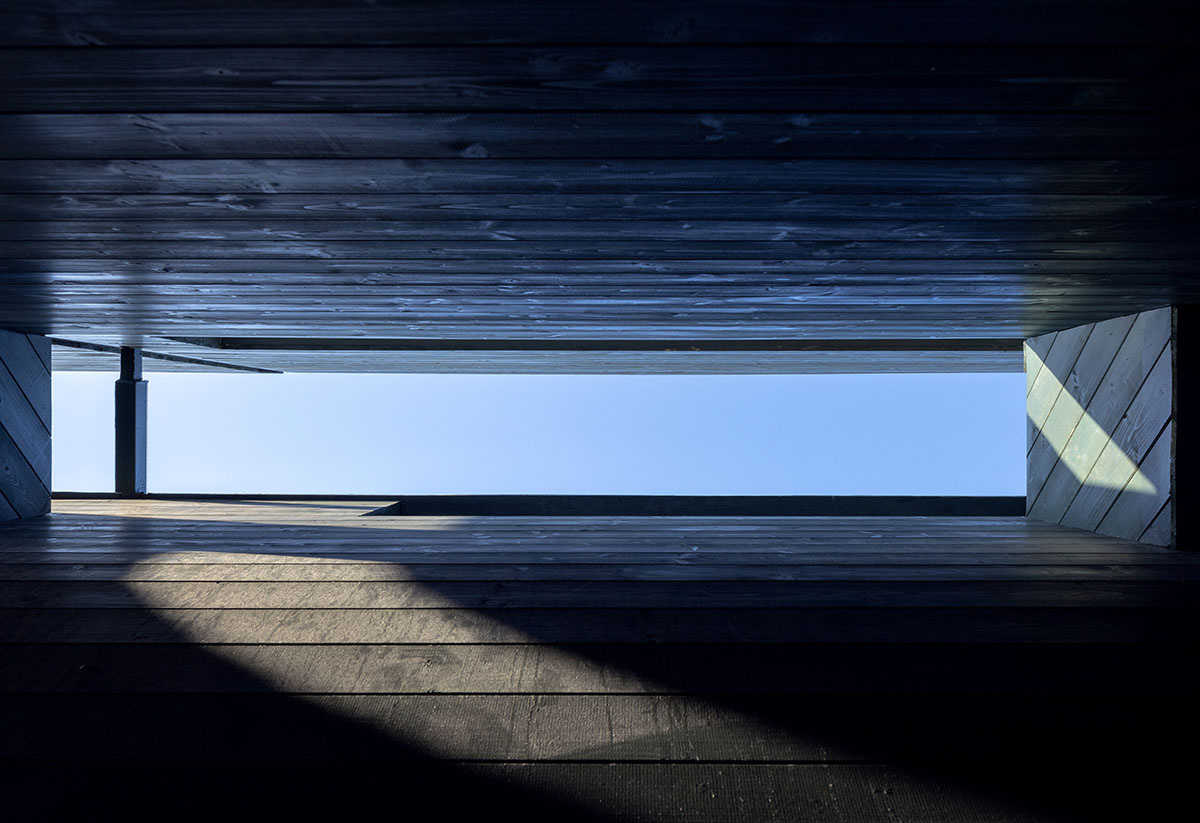
Glimpsed the evening blue sky through the skylight. Image © LIU Songkai
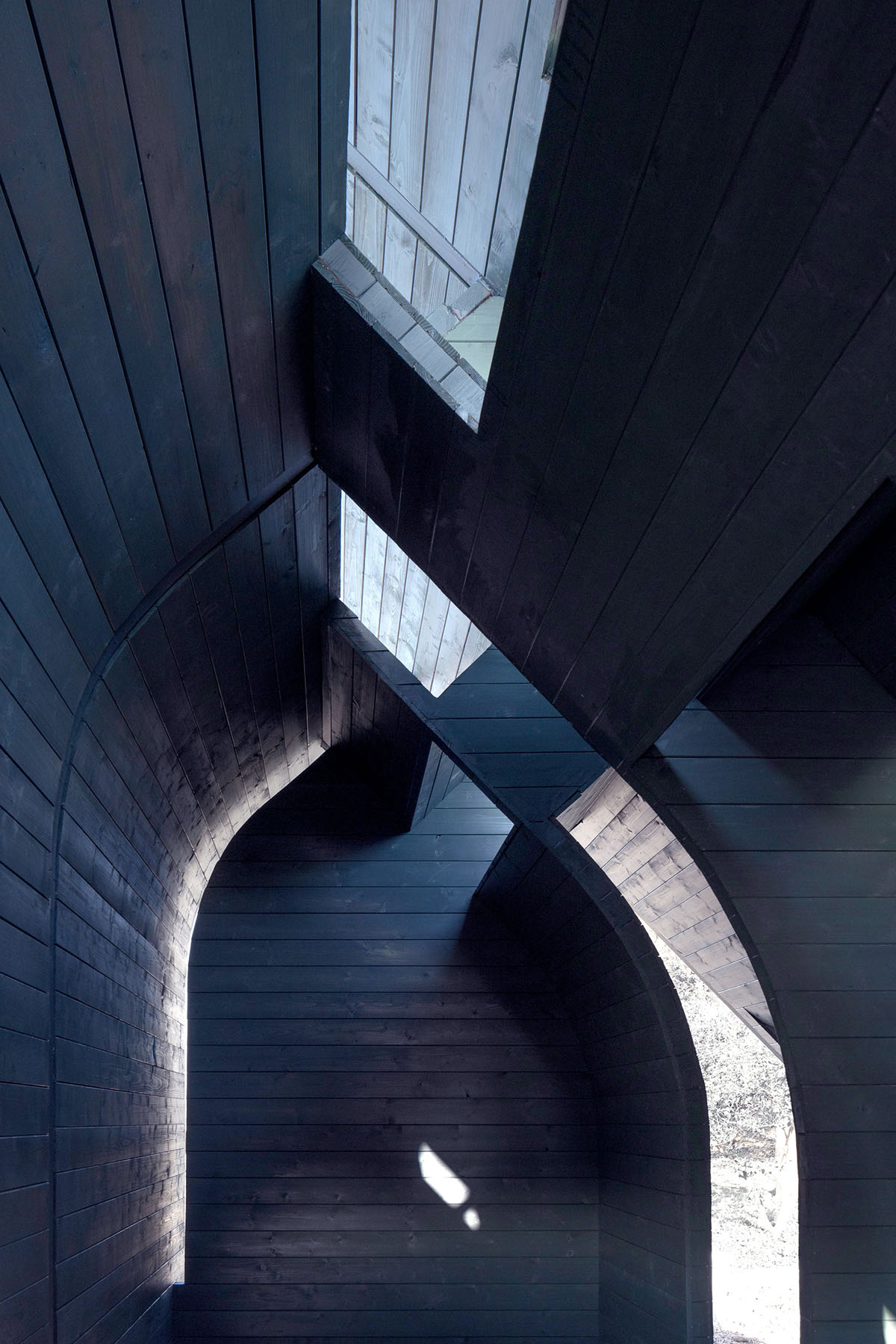
Relationship between light and shadow in interior space. Image © LIU Songkai
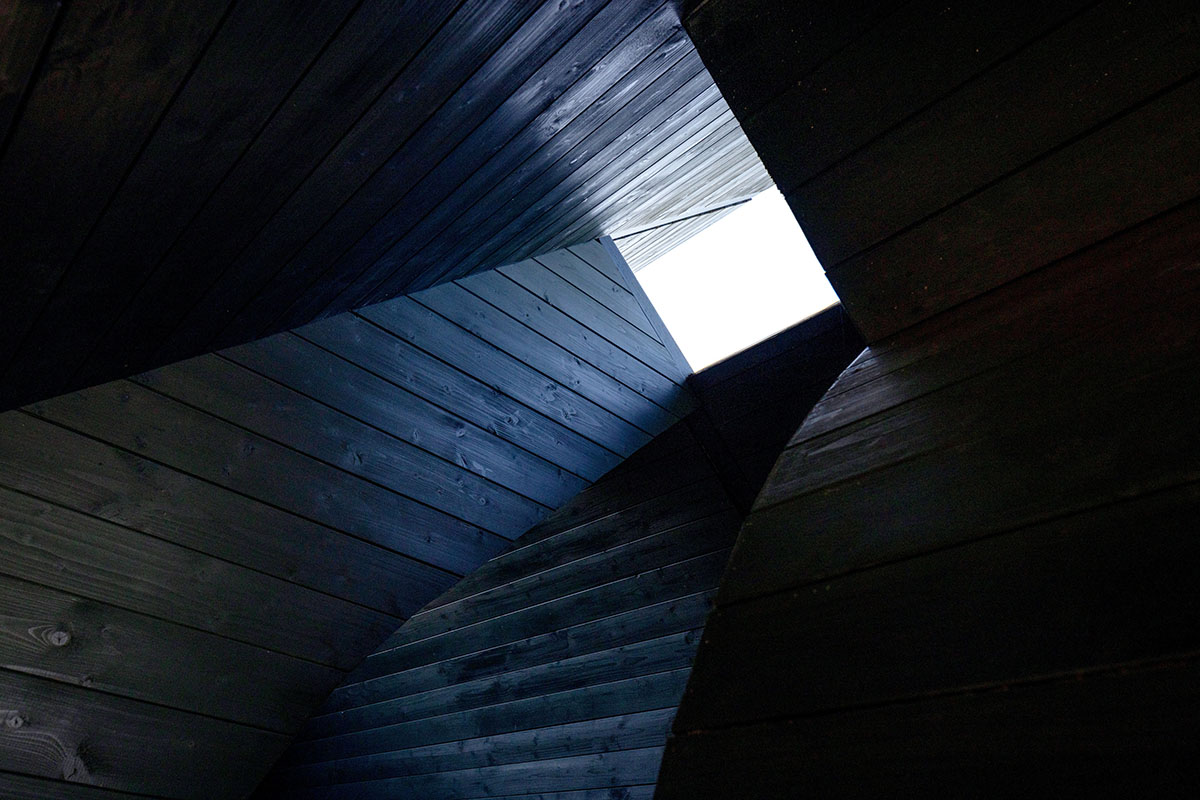
Glimpsed the evening blue sky through the skylight. Image © LIU Songkai
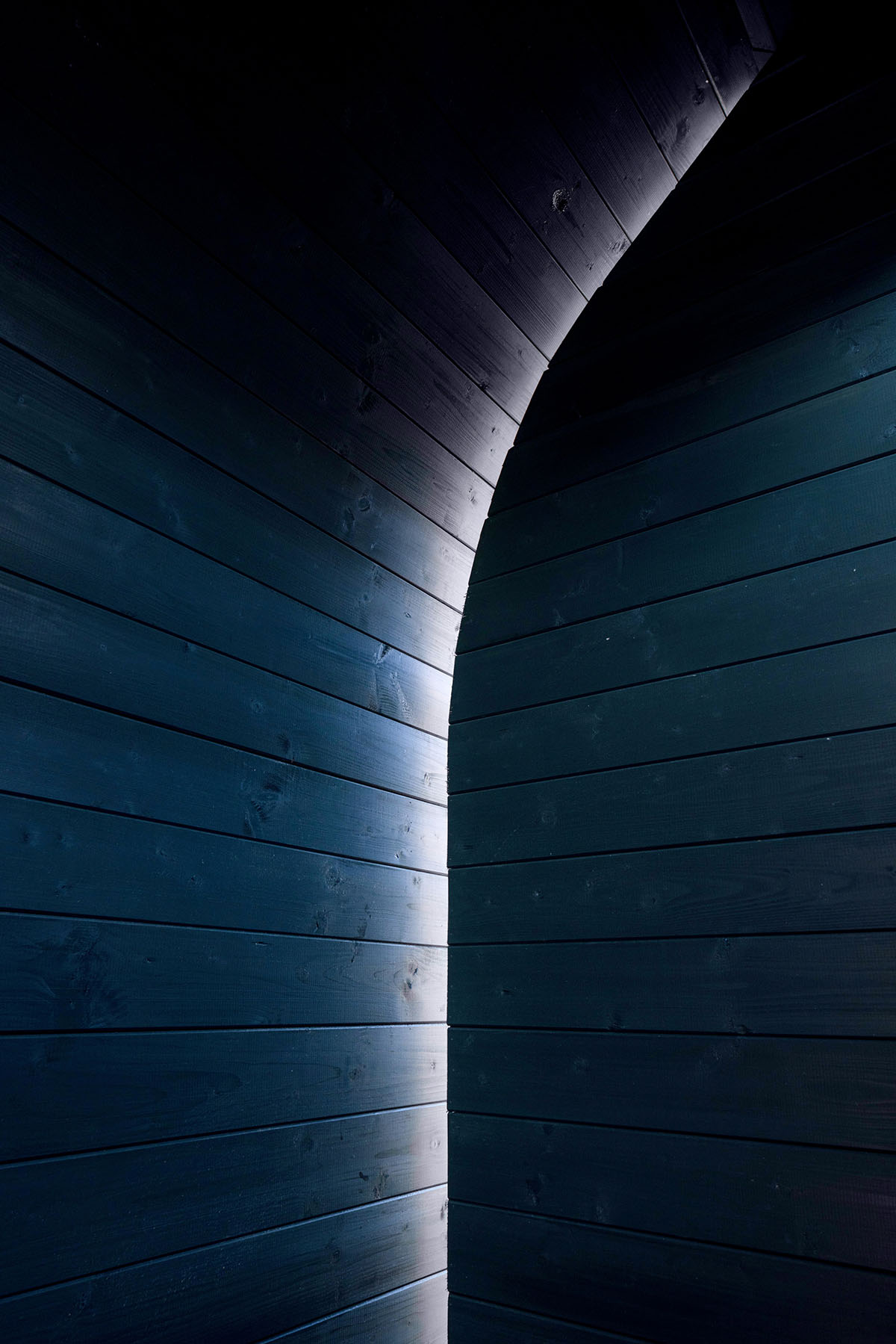
Light seeps in through the crevices, and the sea breeze blows in through them. Image © LIU Songkai
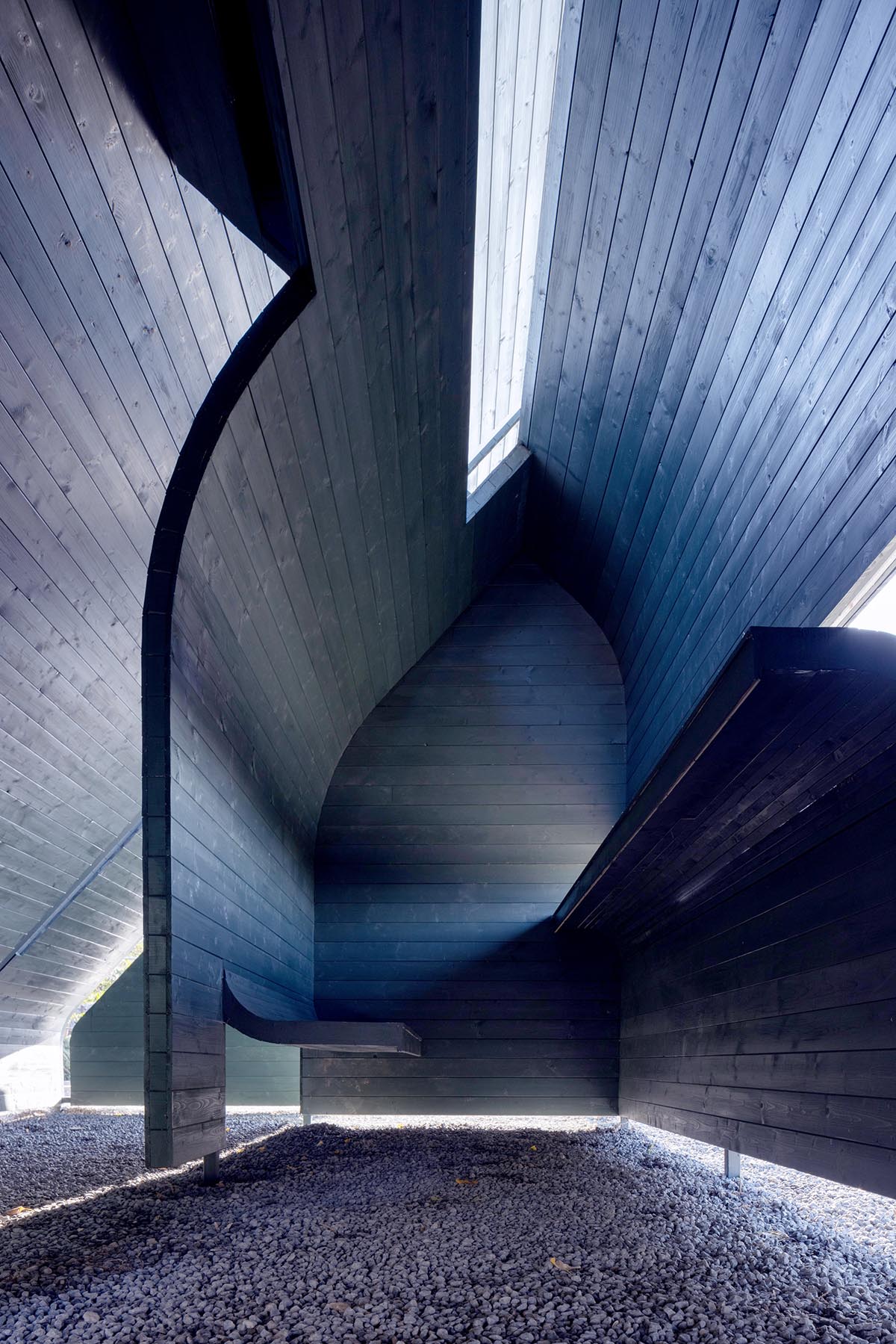
Sitting on the stone floor and meditate, feeling the wind and light. Image © LIU Songkai

Relationship between light and shadow in interior space. Image © LIU Songkai
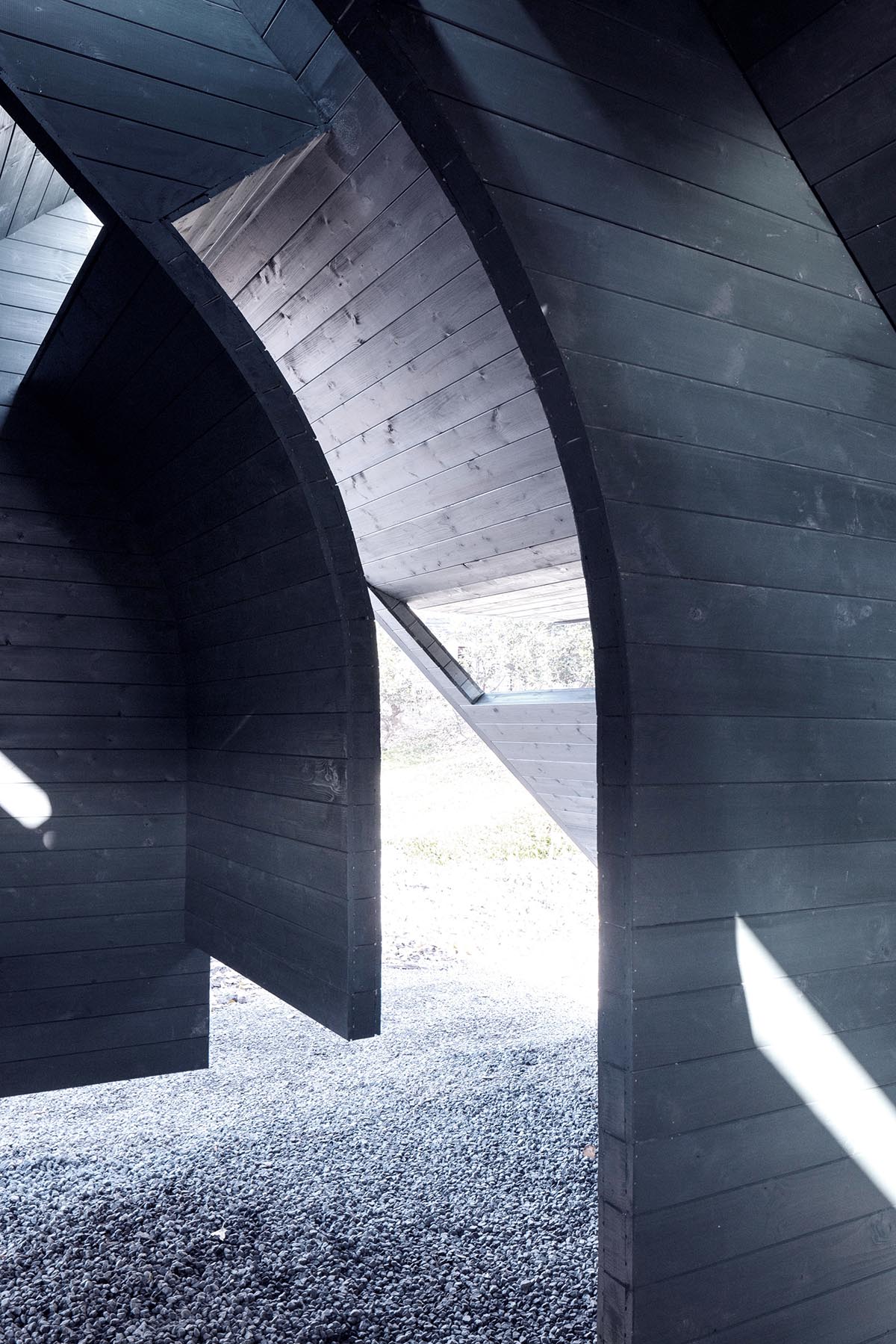
Midday daylight illuminates the entrance space. Image © LIU Songkai
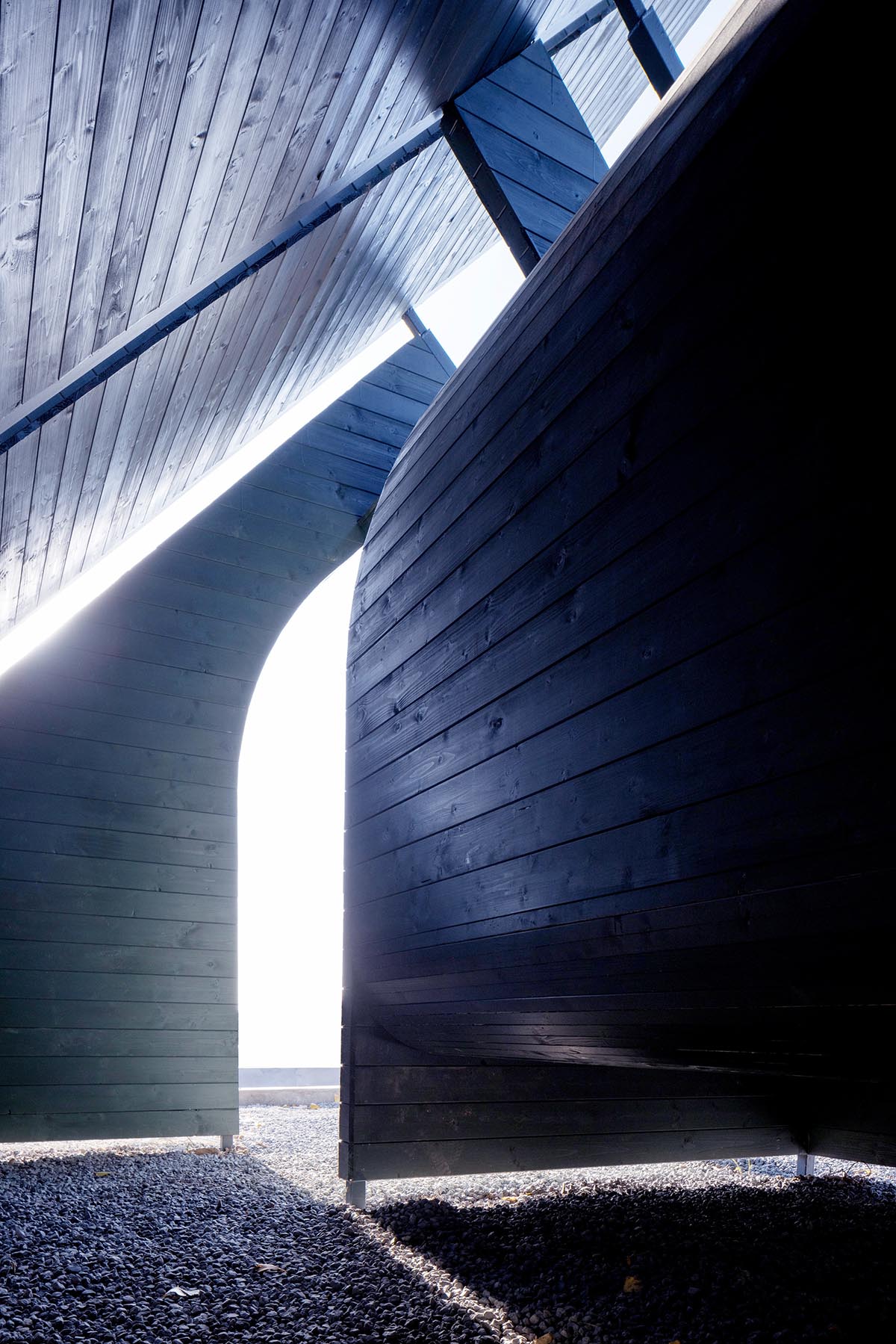
Midday daylight illuminates the entrance space. Image © LIU Songkai
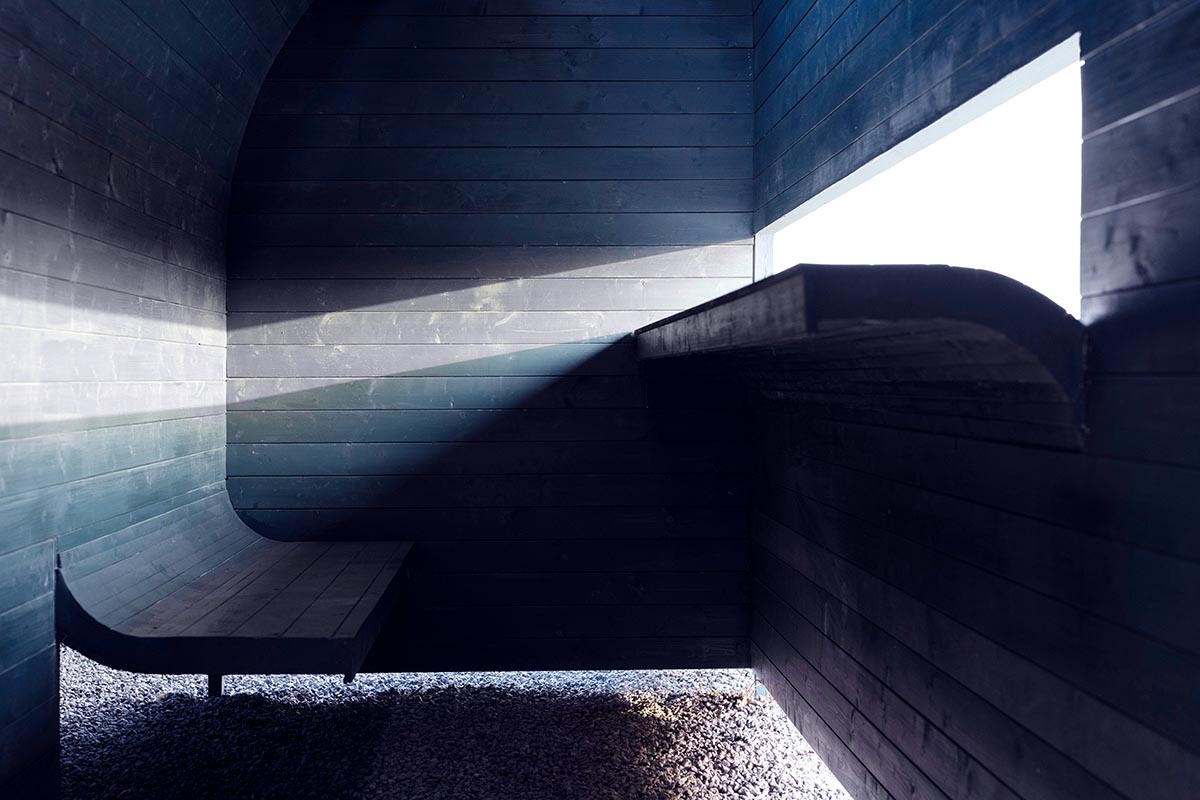
Lying in front of the window and looking out at the landscape. Image © LIU Songkai
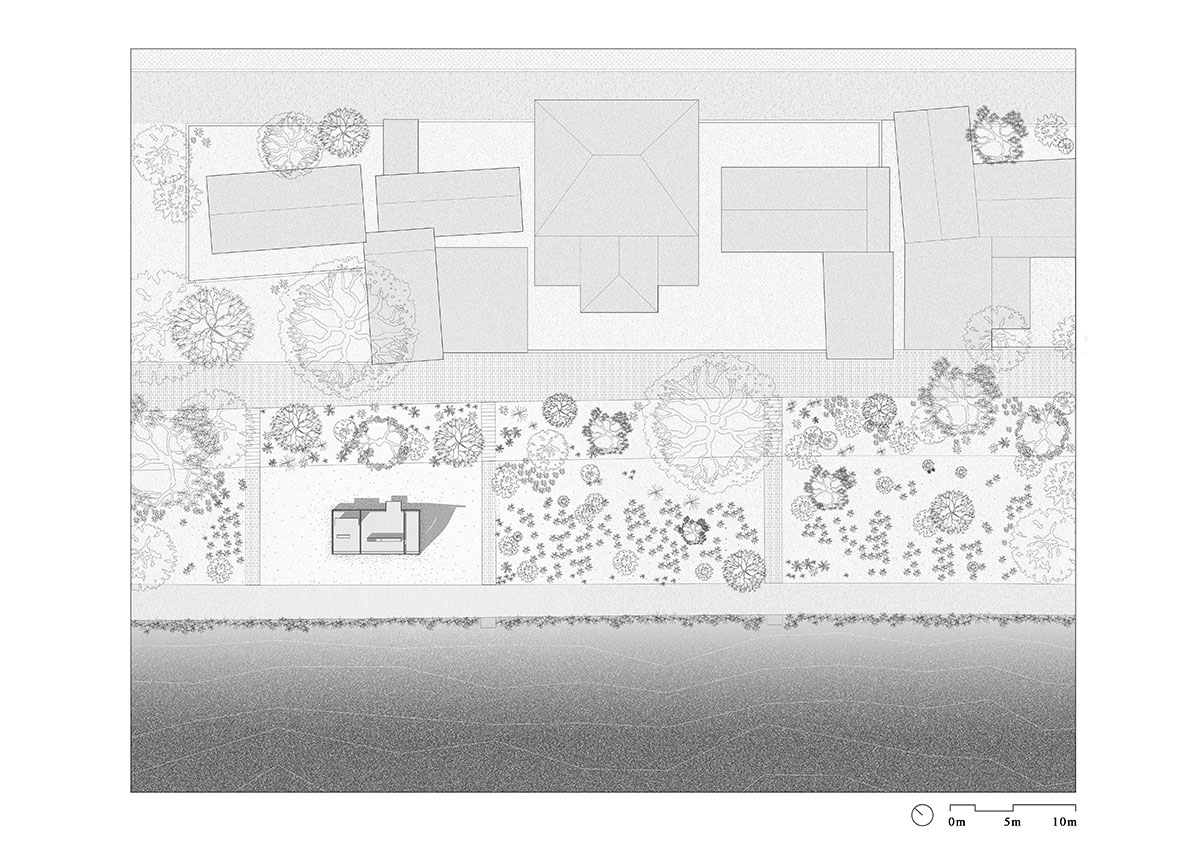
Site plan
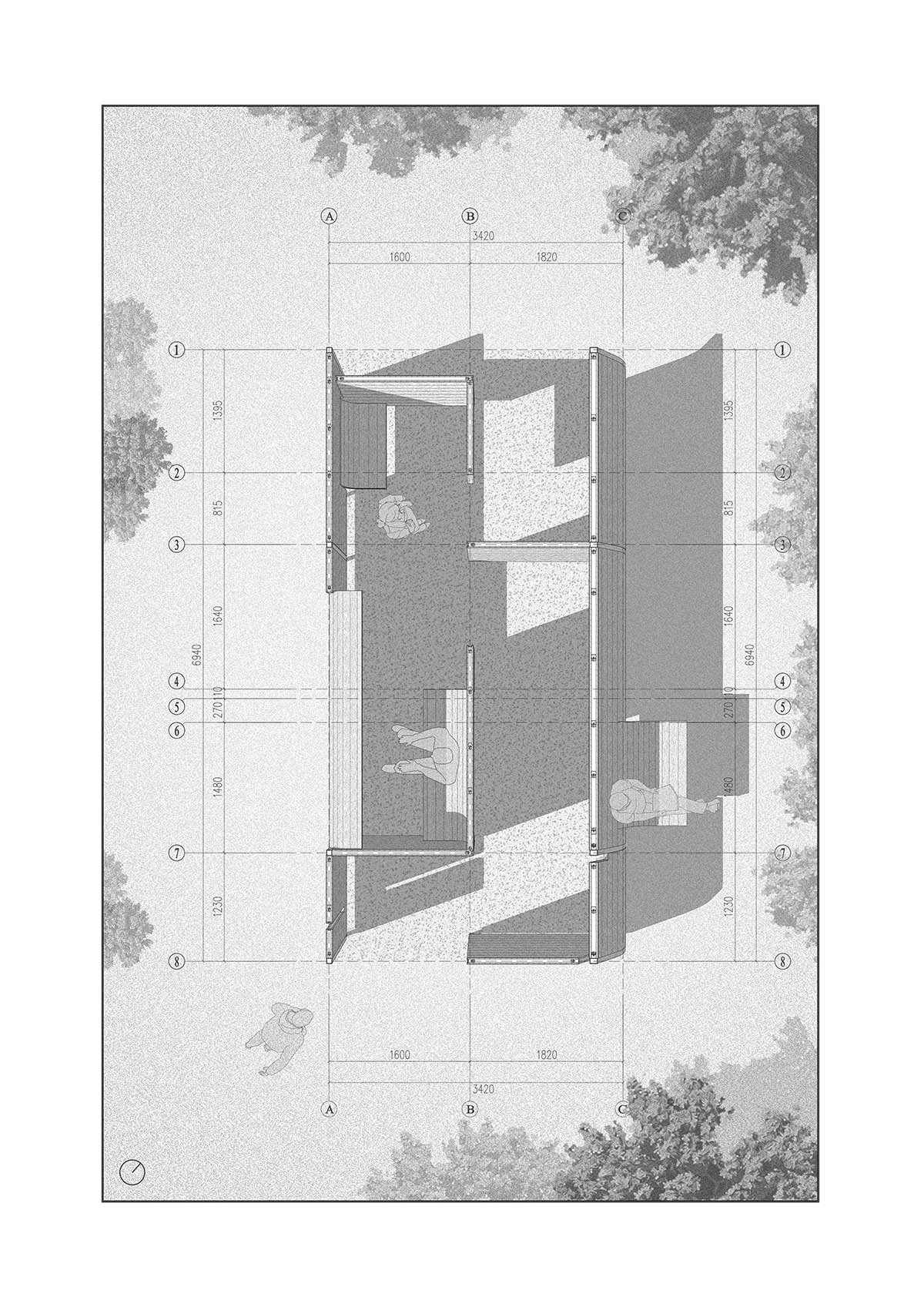
Floor plan
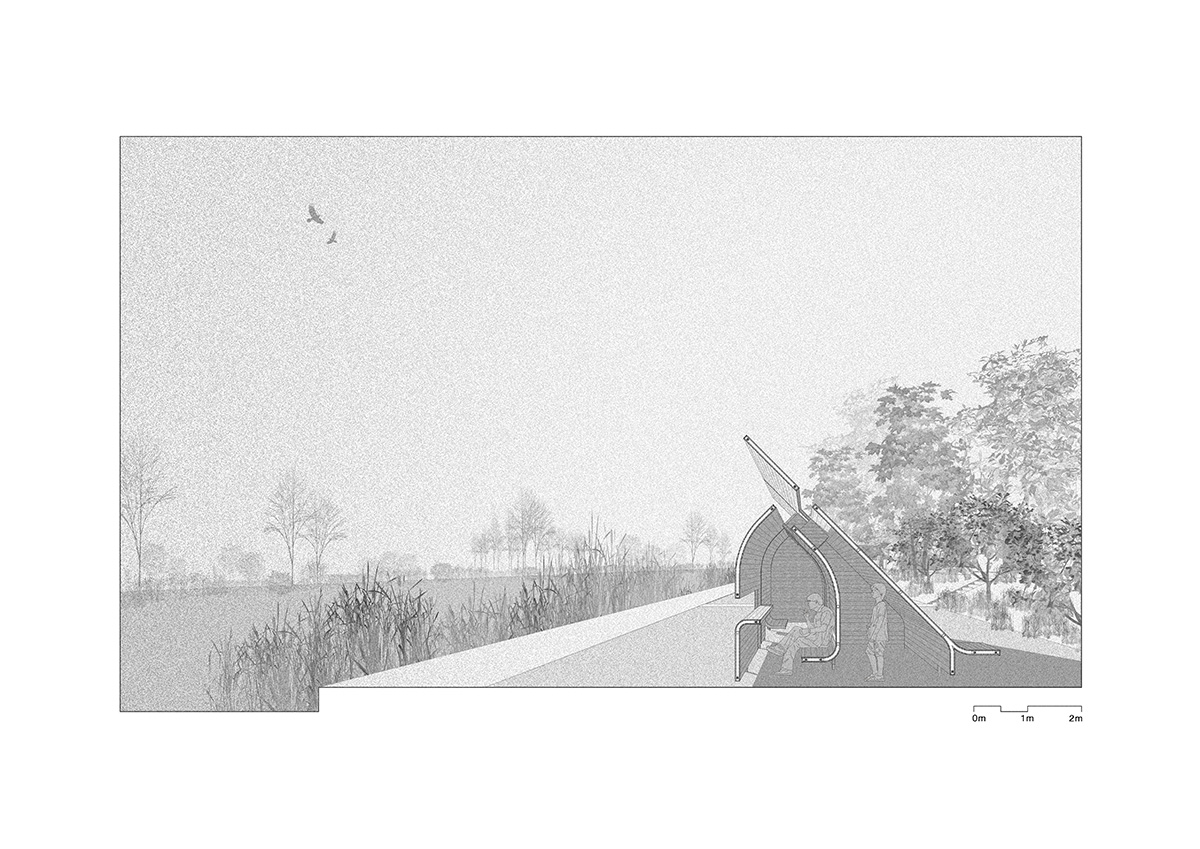
Section cut view
LIN Architects previously completed a meandering bamboo pavilion acting as a social generator in a rural area of Shaghai, China.
Project facts
Project Name: Wood Pavilion #1 Experiment on space prototype (I)
Design Firm: LIN Architects
Project location: Zhenjiang, Jiangsu, China
Area: 50 m²
Year: 2021, December
Land area: 160 m²
Lead Architects: Lin Lifeng, Chen Yuwei
Teaching research support and Materials Support: RAC Studio
Construction guidance: Shanghai Kangle Wood Structure Co., LTD
Technical Consultants: Shao Yinghong, Hu Hongman, Xie Gong
Owner and venue: Aoya Design, Jiangxinzhou Wutao Village
Drawings: Chen Yuwei, Chai Zongrui, Li Xueqing, Huo Yan, Huang Qiyue, etc
Design participation and site construction: Chai Zongrui, Li Xueqing, Huo Yan, Huang Qiyue, Zhong Yaoyao, Ren Yiyang, Chen Xiaochi, Chen Luyao, Yang Chenxuan, Wang Xuening, Zhang Zhen, Li Xiaomin, Zhu Xuanyi, Wu Yifan, Lu Zheyuan, MAO Dangran, Wen Sirui
Top image © LIU Songkai
All images © Songkai and Lin Lifeng
All drawings © LIN Architects
> via LIN Architects
